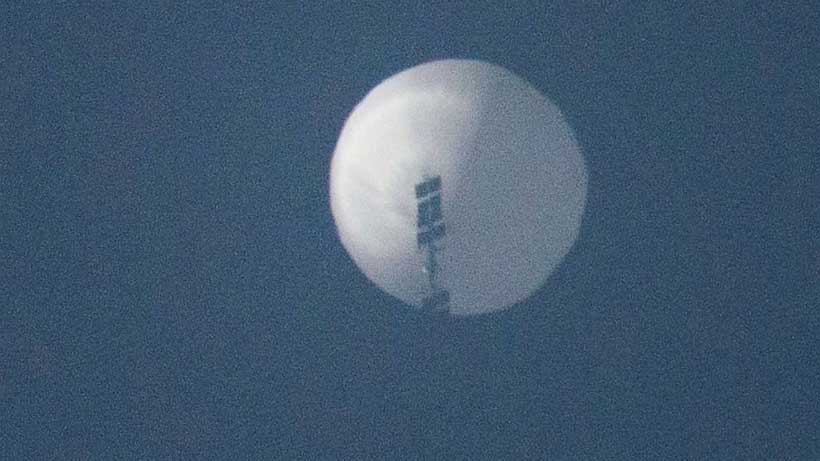With advanced technology, states have adopted new means to defend their interests abroad, but this has also opened new avenues for crisis and conflict. On February 4, 2023, a balloon flying over Charlotte, North Carolina became a spoiler and caused a wrench in already tense US-China relations. According to Pentagon, the object of attention in US media, the Public, and politicians was a 200 feet tall Chinese surveillance balloon. The US shot down the balloon as it was floating above nuclear missile fields in Montana. These sorts of balloons have advanced systems that allow them to capture communication signals. With the sight of the balloon, tensions erupted and rhetorical skirmishes were observed between the United States and China over the possible interpretation of the Balloon. On inspection of the balloon, the US found out that the balloon has a maneuverable surveillance system with a large scale of capabilities. The US considered it a violation of their sovereignty and a breach of International law. Whereas China disapproved of any such claim and called it a civilian airship used for civilian purposes.
What law says about Air-Space?
The United Nations agency called International Civil Aviation Organization in its 1954 Convention mentions that every state has full control and sovereignty over the air space above its territory. And hence any aircraft cannot fly over the state’s airspace without permission may it be for commercial purposes. The ICAO defines a balloon as a non-power-driven, unmanned, lighter-than-air aircraft system that takes a free flight. Balloons and airships are considered aircraft under International law. Moreover, the other specific set standards also provide that country should properly authorize and operate any balloon originating from its territory. Moreover, it should communicate in advance about the launch and trajectory of its balloon to relevant air-traffic services to avoid any misadventure or surprise. Furthermore, if any such airship enters the territory of another country without informing, its operation must be terminated by the country whose sovereignty has been violated.
China has not informed of the airship in advance which caused more mistrust and hence the shooting of its spy balloon by the US. The damage that balloon can cause to the US is another debate but the question is how it has disturbed the already tense relation of both states and lost an upcoming opportunity for the creation of détente…
A lost opportunity
Before the Balloon was caught by the US, a diplomatic visit of US secretary of state Antony Blinken to Beijing was planned. It was to be the highest level US diplomatic visit to China since 2018 with the intent to create a détente in the US-China tense relationship after the positive meetup of President Xi-Jinping and President Joe Biden in Bali in November 2022. After the balloon standoff, the opportunity for both global powers to settle their issues amicably was lost as Antony Blinken canceled the trip. He highlighted that after careful consultation with other agencies and partners, it was decided that conditions were not conducive for a constructive visit at this time.
Although initially, China accepted that the airship was from China as per the Chinese Foreign Ministry statement the airship was used for research purposes and it deviated far from its planned course and showed regret over its entry into US airspace due to force majeure. After the balloon was shot, the Chinese Foreign Minister Xie called it an overreaction and abusive use of force by Washington. The positive step taken by both sides was sidelined due to the balloon crisis. Whether the Chinese balloon was sent intentionally for surveillance purposes or not, the balloon crisis indicates that before any experiment in the air space, it’s the responsibility of the states to inform others of their action to avoid unanticipated and accidental reactions. In International Politics, small acts have the potential to create an amicable environment for cooperation and small acts have also the potential to disrupt the relationship between states in seconds. The competition between the two powers is on the rise and this competition has transformed into conflict. Even in the National Security Policy 2022, the US mentioned China as a threat to its interests in the Indo-Pacific. With such perception and mistrust, there are chances of miscalculation so both Beijing and Washington should be careful in dealing with such airships in the future.
Moreover, there is a dire need that two competing powers should establish communication channels in reaction to the crisis. With the existing diplomatic channels, there must be crisis communication channels where the two militaries should stay in contact. Diplomacy and cooperation work in the presence of mutual trust which the two states lack at the moment. Other states that perform research work with airships must issue prior notices to avoid mishaps and misadventures in the future. As no equipment has been invented yet which can gauge the intentions of states, hence to avoid such quagmire, revealing intentions before dealing with such airships (that can change their determined path) is essential to avoid balloon-like a saga.


